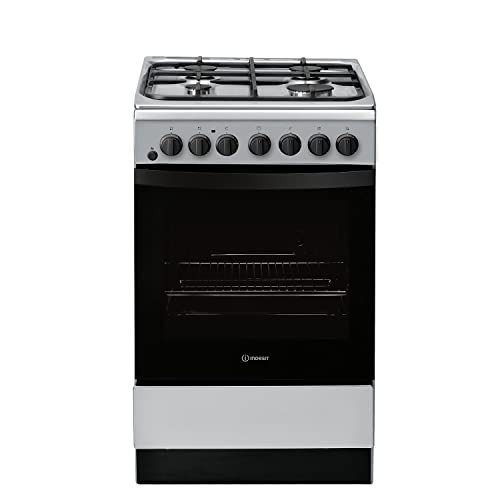10 Unexpected Hob And Oven Tips
Understanding Hobs and Ovens: The Essential Kitchen Appliances
In the realm of kitchen home appliances, couple of items are as necessary as hobs and ovens. These appliances form the backbone of cooking activities, enabling individuals to produce everything from easy meals to elaborate feasts. Understanding the differences, types, and performances of hobs and ovens can considerably enhance one's cooking experience. This article looks into the intricacies of hobs and ovens, providing insights that cater to both beginner and seasoned cooks.
What Is a Hob?
A hob, often referred to as a cooktop or stove top, is the flat surface area on which pots and pans are positioned for cooking. Ovens & Hobs are geared up with heating aspects that create the needed heat for cooking food. They come in numerous forms, including gas, electric, induction, and ceramic alternatives. Each type uses unique advantages and downsides.
Types of Hobs
Gas Hobs:
- Heat Source: Natural gas or propane.
- Benefits: Instant heat control and responsiveness, chosen by many chefs for accurate cooking.
- Disadvantages: Requires a gas connection and can be less energy-efficient.
Electric Hobs:
- Heat Source: Electric coils or smooth glass-ceramic surface areas.
- Advantages: Generally easier to clean up, even heating, and widely readily available.
- Disadvantages: Slower to heat up and cool off compared to gas.
Induction Hobs:
- Heat Source: Electromagnetic currents.
- Advantages: Quick heating, energy-efficient, and just heats the pots and pans, not the surrounding surface area.
- Drawbacks: Requires suitable pots and pans (ferrous products).
Ceramic Hobs:
- Heat Source: Electric and has a smooth glass surface area.
- Benefits: Sleek look, simple to tidy, and even heating.
- Disadvantages: Can take longer to warm up and cool off.
What Is an Oven?
An oven is an enclosed home appliance that cooks food by surrounding it with dry heat. Ovens can be standalone units or integrated with hobs in a single appliance understood as a range. Ovens are versatile tools that can be utilized for baking, roasting, broiling, and more.
Kinds of Ovens
Standard Ovens:
- Heat Source: Electric or gas.
- Benefits: Good for traditional baking and roasting.
- Downsides: Can have uneven heat circulation.
Convection Ovens:
- Heat Source: Electric or gas with a fan for flowing air.
- Advantages: More even cooking and much faster cooking times due to air flow.
- Disadvantages: Can be costlier and may require changes in cooking times.
Microwave Ovens:
- Heat Source: Microwaves.
- Advantages: Quick cooking and reheating; terrific for defrosting.
- Drawbacks: Can not brown or crisp food well.
Steam Ovens:
- Heat Source: Steam generation.
- Advantages: Retains nutrients and wetness in food, healthier cooking option.
- Downsides: Longer cooking times and generally greater cost.
Key Differences Between Hobs and Ovens
While hobs and ovens serve the primary purpose of cooking food, their performances and utilizes differ significantly. The following table sums up these crucial differences:
Feature
Hob
Oven
Cooking Method
Direct heat
Confined heat
Primary Use
Boiling, sautéing, frying
Baking, roasting
Heat Source
Gas, electric, induction
Gas, electric, steam
Cooking Area
Flat surface area
Enclosed space
Cooking Time
Usually faster
Varies based upon dish
Control & & Precision
Immediate and direct
Count on settings and timers
Benefits of Using Hobs and Ovens Together
Integrating making use of a hob and an oven can greatly boost the cooking process. Here are some advantages:
- Versatility: Different types of food can be cooked simultaneously.
- Effectiveness: Using both permits numerous cooking techniques, such as scorching on the hob and baking in the oven.
- Time-Saving: Multi-tasking can significantly decrease total cooking time.
Upkeep and Care
To ensure the longevity of hobs and ovens, routine upkeep is important. Here are some suggestions:
For Hobs:
- Clean spills immediately to prevent staining.
- Usage suitable cleaners for specific products (e.g., ceramic cleaner for glass-ceramic hobs).
- Regularly examine gas connections for leaks (for gas hobs).
For Ovens:
- Wipe down the interior after each use to prevent accumulation.
- Use self-cleaning features if readily available, or use oven cleaners for difficult spots.
- Frequently inspect seals and gaskets for wear and tear (to keep heat efficiency).
Frequently asked questions About Hobs and Ovens
1. What is the very best type of hob for a newbie cook?
Response: A ceramic or electric hob is frequently advised for newbies due to relieve of usage and cleansing.
2. Can I utilize any pots and pans on an induction hob?
Response: No, induction hobs need cookware made from magnetic materials (e.g., cast iron or stainless steel).
3. How often should I clean my oven?
Response: It is advisable to clean your oven every few months, or more frequently if you use it typically.
4. Is it much better to bake in a stove?
Answer: Yes, stoves are typically better for baking as they supply even heat circulation. Nevertheless, some delicate dishes might gain from conventional ovens.
Understanding the performance and distinctions in between hobs and ovens is essential for any cooking enthusiast. Whether one prefers the instant heat of a gas hob or the accuracy of an induction cooktop, each type uses unique advantages. Likewise, ovens vary widely in function, from conventional baking to steam cooking. By valuing these devices' functions in food preparation, cooks can boost their cooking skills and improve their kitchen activities.
